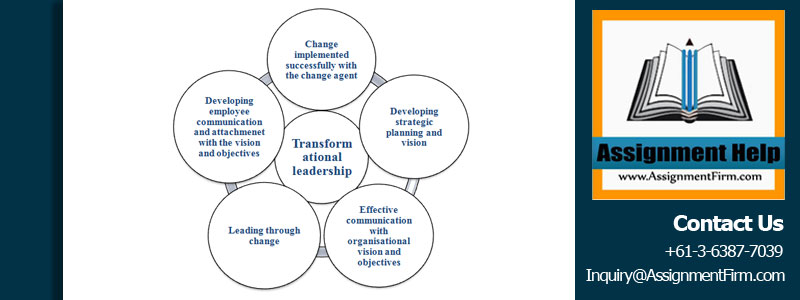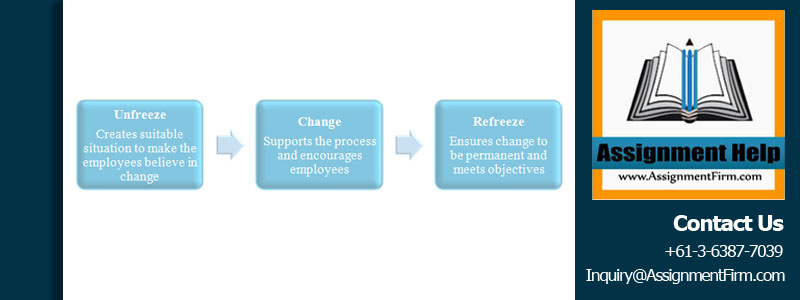Introduction:
In the present study, the discussion associated with organisational behavior change progression and its process of implementing upon the employees through motivating them to adopt the developmental change. Therefore, in the study, the discussion progresses about change management process in perspective of Iceland Foods, UK. Being a strategic manager of Iceland, I have taken up the responsibility to successfully implement the change through communication and motivating employees to accept the change.
Change is needed to prosper and to meet with the organisational behavior objectives with a better aspect as change is suggested with the only constant thing for development in the recent competitive market situation (Bass et al. 2003). Change management or implementing change is not an easy job for the executives or the managers as there are employees who require becoming aware and understanding the importance of change.
Therefore, as Iceland Foods UK had planned to open their new store in India, the employees as well the workforce should be trained and managed in a way so that they can accept change with little resistance. Iceland is an UK based private retail store started its journey in 1970 with Malcolm Walker. As time passed, the store grew up and started doing business worldwide (About.iceland.co.uk, 2014). Presently, Iceland has over 800 stores in the European market and decides to prosper in the Asian market as well with India being the first place of opening.
Importance of Change:
Change in the organisational behavior process is a ‘constant process’. Change is important for several reasons as resistance to this will hamper the organisational behavior operation and meets the organisational behavior objectives as well (Stephens et al. 2008). Being a strategic manager at Iceland, my perspective stands for change is a little different. I think that change welcomes advancements and developments. It can be implementing technological advancements or adopting newer means of technology in the business process, or training the employees for the change to handle untimely situation.
Often change is resisted by the employees, but meeting the employees’ objective with the organisational behavior objective make them resist less. Technological advancements lead to change the business process. Advancement in technological aspects transforms business serving as well as initiating the profitability for adopting newer technological facilities (Lane, 2010). In Iceland Foods, we had adopted the internal software system to record the data of regular customers and had also trained the employees for managing the software system. Again, change is implemented for cope with the global business process. Globalization had started to make the business perspective of the world into a free market. Therefore, to cope with this, change in the organisational behavior culture and process will help to ‘improve efficiency and productivity’.
Employees’ Resistance to Change:
Employees’ resistance to change is normal because employees are unaware of the organisational objectives and business purposes. They are simply concerned with the personal improvement as organisational behavior change process makes them feel insecure, anxious and depressed. Therefore, as a strategic manager, it was my duty to work with the steps of denial and resistance to change (Denhardt et al. 2008). In this study, the main challenge is to drive the change for a positive outcome as identifying the employees for their prosperity in the change process. The Iceland Food employees were worried to go in a new place like India and manage their career there.
Therefore, as a manager my duty is to implement change and make them the purpose of change in the business process. It becomes easy for the employees if they are made aware about the change process and the inherent creativity and innovation of change. Developmental training makes employees aware of the organisational behavior strategies and objectives as it creates involvement with the change process and the motivational activities for adopting change (Chen and Chowdhury, 2012).
Communicating Change within the organisational behavior:
The role that I took up was that of a ‘change agent’. The role of a change agent is alike a catalyst that involves in the change process, push the process and manages the limitations as well for developmental perspective (De Silva, 2013). Often change agent is the push factor leading people of Iceland Foods for receiving changes in a slow yet steady manner.
The change agents are required to have a clear vision of the outcomes of change. This can make him/her state the organisational behavior objectives to the personnel in an influencing manner. The employees are not ready to adopt change. Therefore, the agent has to be patient and determined to make a sustainable change and include people into the process (Bass et al. 2003). On the other hand, it is normal to have queries from every employee separately. Therefore, the agent is required to be patient to all the answers as uninformed personnel can create more chaos and resistance. Adequate information provided to the employees before and during change often produces a mutually understood situation; whereas, it also help in assignment building relationships with the employees with the help of open ended communication (Wsuc et al. 2009).
Therefore, as a change agent of Iceland Foods who will implement change in the business process to make business in the Indian market, transformational leadership is the one that I had approved to implement to accustom change among the employees. Transformational leadership is solely meant for identifying change and needs of change with proper communication to the employees and the organisational behavior (Pearce and Sims Jr, 2002). This style has a shared proposition of qualities that is an amalgamation of management assignment help and leadership. Transformational leadership ‘breaks down resistance to change’ as strategic implementation to change creates sustainability for the process.

Figure 1: Communicating change with transformational leadership
(Source: Pearce and Sims Jr, 2002)
Motivating Change through Open Communication:
Employee motivation while there is an organsiational change process is not an easy job. Therefore, as the strategic manager of Iceland Foods, I had gone through some personal transition also that helped to communicate well with the employees.
Open communication fosters information distribution and decreases the rumor (Nieswandt, 2011). As the leaders and the executives had adopted an open communication, the employees are more flexible to ask their queries about change or the process of change. Adequate information to the employees also can increase the ratio of meeting organsiational objectives with the desired change process.
On the other hand, this open communication improves the decision making process. As decision making includes every objective of the stakeholders, the organization and the recent changes in the business process, employee feel more carefully contacted by Iceland Foods (Iceland.co.uk, 2014). Open communication facilitates the process of feedback gathering for the change process and sharing the employees’ views and suggestion for the change process. This will lead to a developed and modified workforces those are well in communication, share their objectives and accept change for organsiational objectives to prosper.
Lewin’s Change Management Model:
As a strategic manager of Iceland Foods, I had understood the need of change in the business process and taking a new step to the globalised market. Therefore, implementing Kurt Lewin’s change management model had provided me the background for accessing change among the employees. The model comprises three steps- unfreeze, change and refreeze (Wsuc et al. 2009).
Unfreeze: In this stage, the organization has to create a situation that supports change. While presenting the necessity of change is common to have resistance from the employees. Therefore, Iceland Foods and the managers of the retail organization should make the employees understand the recent market situation, the lame business objective, need to change the business process for better business purpose and growing customer dissatisfaction from the services provided (Langley et al. 2013). As these aspects make it clear and understandable to the employees that change is the only option for growth and they lessen resistance for change process.
Change: After the employees had gone through the unfreeze stage, they understands the necessity of change and start to enter in the change stage. As a strategic manager of Iceland Foods, I think it is normal to have resistance and people will protest for the process. An effective and open communication will facilitate the process of implementing change in the activity. Iceland Foods had therefore provided time to the employees to accept change as this may cause serious harm to some of them in their careers. Change is the process to move with the newer objectives and processes as in here transition starts (Nieswandt, 2011). The employees accept the challenges for change as the organsiational duty remains to support them with the challenges and their struggling for coping in the new situation.
Refreeze: As change has taken place in the organization, it is time to reshape and reorganize the organisational objectives in the changed perspective and increasing the terms of growth. In this stage, I, as a strategic manager had decided to reinforce and stable the chaos situation of the Iceland Foods in India. This is a delicate stage. The employees are careful about the organisational behavior promises before change and expect to fulfill those in an effective manner (Eagly et al. 2003). On the other hand, there is opinion that states that Lewin is not professional in the refreezing stage as conditions and situations change in business process very often. It is needed to adopt newer strategies and business objectives to imply change in an effective manner (Langley et al. 2013).

Figure 2: Lewin’s model of change
(Source: Wsuc et al. 2009)
Change and Motivation:
Change is a key element for development. It is stated in the above context of the study that motivation is an important part to introduce and accept change among the employees. Motivation affects change as this have a multidimensional aspect to fulfill (Eagly et al. 2003). Often it is said that motivational aspect or motivation is the key aspect to improve change in the organisational process to change.
Motivational words from the strategic managers or the executive leaders works in a multi-dimensional ways. It can increase the urge to understand the necessity of change and make the change acceptable will sufficient support. On the other hand, as Iceland Foods is meeting changes for introducing themselves as per the Indian market, it considers social interactions and motivates local employees accordingly. It is often stated that ‘motivation is influenced by social interactions’ (Hunsaker et al. 2008).
Therefore, Iceland employees have a great impact upon their motivation of Indian social aspect, their co-worker, family support and employability in the organization. These are simultaneously the internal and external factor of motivation that makes the personnel approve change in a positive manner. Cloud (2010) states that motivation and change is interconnected and has impacts upon each other for several reasons. As Lewin’s change model had highlighted that change have steps that make people accustomed with the process; similarly, it is motivational process or acts that make people ready for change, accept change, go through change as there is a support system to adopt change in the transitional period.
Implementing Change in Transition Period to Meet Organisational Objectives:
Change process goes through various steps as to implement these stages I had categorized first the type of change that is undertaken in Iceland Foods. As the retail organization had decided to open their store in India, there is an overall cost change, process change and cultural change to meet the organisational objectives (Cloud, 2010).
To implement change in the complete process of opening a new brand and overall transition in the business process, I had undertaken a supportive plan that includes not only the employees, but also the executives and the managers in the process. To implement change the transition period mostly needs the top-level executives who will manage change among the business process to meet the organsiational objectives (Hunsaker et al. 2008). These key people spread the concept and information about change to properly involve the change into plan and make the employees accustomed with the organisational objectives meeting the employees’ objectives.
Conclusion:
In the present study, I, as a strategic manager of Iceland Foods had adopted a change situation in the organization. The employees and the managers are undertaken in the change process as elements of change so that the transition can be implemented in a proper and effective way to meet the organsiational objectives. The elements of change had gone through the Lewis’s model of change that had made the change process easy and supportive for communicating with the transformation.
Get MSWPG7212 Organisational Culture And Management Assignment written by professionals.


